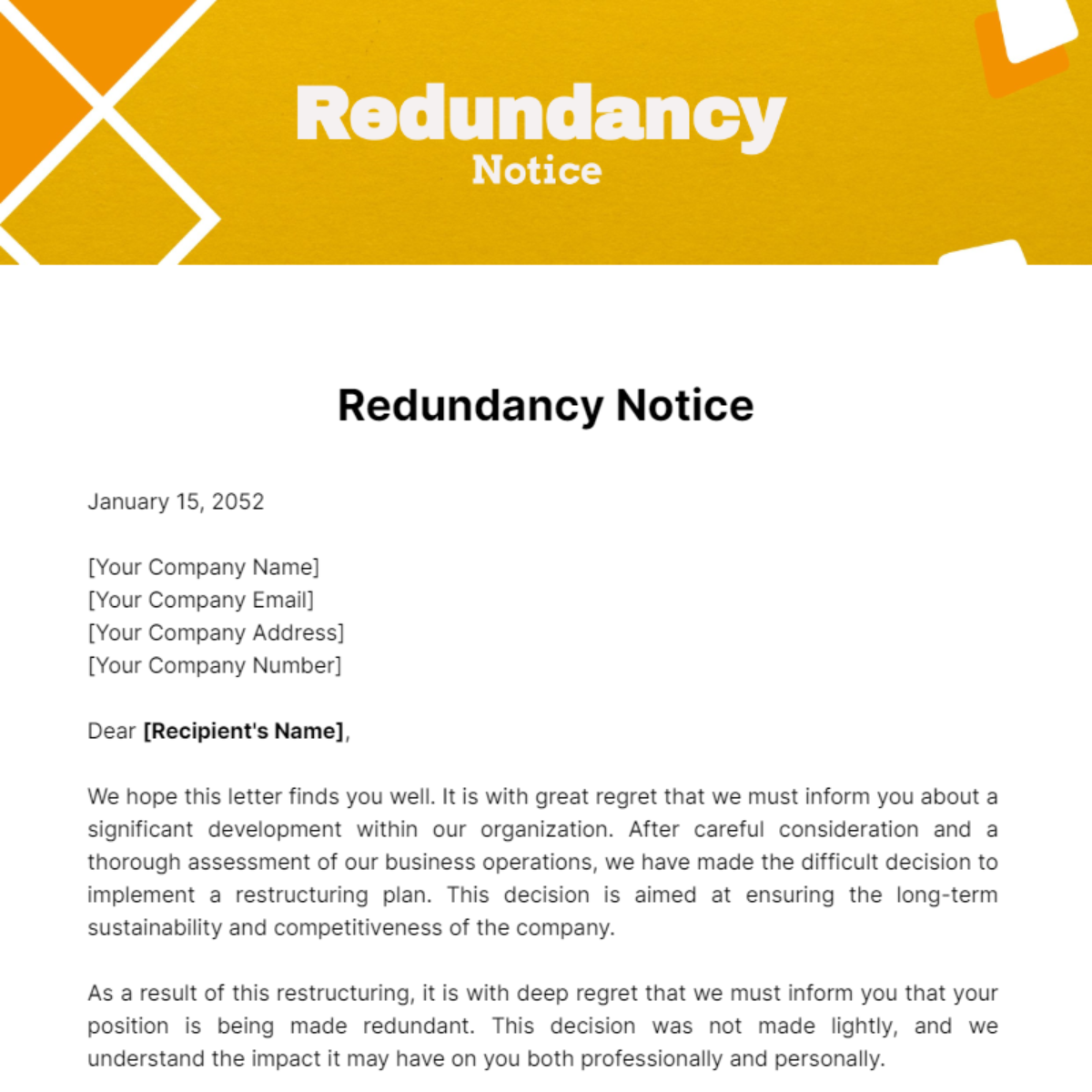Who Pays Redundancy Money? Comprehending Employer Duties in the UK
Who Pays Redundancy Money? Comprehending Employer Duties in the UK
Blog Article
Checking Out the Interplay In Between Company Redundancy and Business Versatility for Future Development
In the dynamic landscape of today's company globe, the detailed relationship between business redundancy and business flexibility arises as a crucial element for continual development and success. Firms often face the difficulty of striking a delicate equilibrium between preserving a level of redundancy to alleviate threats and cultivating flexibility to react promptly to the ever-evolving market needs.
Significance of Business Redundancy
Business redundancy is a critical component that enhances organizational resilience and reduces operational risks. By integrating redundancy steps within the business structure, companies can better endure unexpected disruptions and variations in the business setting. Redundancy functions as a critical buffer, permitting firms to adjust and react efficiently to unanticipated obstacles without jeopardizing crucial operations.
One trick facet of the relevance of firm redundancy is its function in making sure continuity throughout times of crisis. When encountered with abrupt modifications or emergencies, redundant systems, sources, or workers can step in to keep crucial features and stop extensive disruptions. This connection not only safeguards the firm's track record and customer depend on but likewise decreases economic losses and operational downtime.

Approaches for Organizational Flexibility

Producing versatile business frameworks that enable for quick adjustments to market dynamics and consumer requirements is crucial for remaining competitive in a quickly advancing setting. By proactively recognizing prospective disturbances and chances, companies can proactively adjust and flourish in an ever-changing business landscape.
Balancing Redundancy and Flexibility
Attaining a harmonious equilibrium in between operational redundancy and organizational adaptability is paramount in browsing the complexities of a vibrant organization setting. Striking the appropriate equilibrium in between redundancy and versatility is a fragile procedure that requires a deep understanding of the company's objectives, market characteristics, and danger resistance.
To attain this equilibrium, companies need to conduct routine analyses of their procedures to identify locations where redundancy is needed for danger mitigation and where flexibility can drive development and development. Carrying out adaptable structures, fostering a culture of click to investigate continual discovering and improvement, and encouraging open communication across all degrees of the company are essential techniques to integrate redundancy and versatility effectively. By aligning these 2 vital aspects, business can place themselves for sustainable development and success in an ever-changing company landscape.
Instance Studies on Adaptation Success
In analyzing instances of successful organizational adjustment, it ends up being apparent that the interplay in between functional redundancy and adaptability is a specifying consider forming resistant companies. One engaging situation research study is that of Netflix. At first a DVD rental service, Netflix demonstrated amazing versatility by transitioning right into a streaming system when digitalization interfered with the industry. By strategically investing in technology and content creation, Netflix not just survived however prospered in a rapidly developing market. One more standout example is Amazon. Starting as an on the internet book shop, Amazon continuously adapted its organization model, broadening right into varied fields such as cloud computer and synthetic intelligence. This versatility allowed Amazon to remain ahead of rivals and fulfill transforming customer demands. Lastly, Adobe offers a notable illustration of successful adaptation. The firm shifted from offering software application licenses to a subscription-based version, making sure repeating profits streams and boosted client interaction. These study underscore the value of functional redundancy paired with business versatility in fostering long-lasting development and competitiveness.
Structure Durability for Future Development
Building durability for future development needs a calculated positioning of operational procedures with market dynamics and arising trends. Business have to adjust to transforming atmospheres by fostering a society of adaptability, development, and continual renovation. Strength includes not just recovering from obstacles however also proactively planning for future challenges. One vital element of structure durability is investing in durable risk administration methods to minimize prospective disturbances. This consists of circumstance planning, expanding supply chains, and developing backup plans for numerous contingencies (who pays redundancy money).
Moreover, cultivating strong connections with stakeholders, such as customers, workers, vendors, and the community, continue reading this is essential for maintaining and weathering unpredictabilities trust and assistance during rough times. Effective communication and openness play a crucial duty in structure strength, as they aid align assumptions and help with cooperation in browsing uncertainties.
Additionally, companies require to prioritize discovering and growth initiatives to upskill staff members and furnish them with the essential tools to adjust to altering scenarios. By purchasing their workforce, firms can improve their versatility and agility, ultimately reinforcing their resilience for sustainable future growth.
Verdict

In the vibrant landscape of today's service world, the elaborate relationship between company redundancy and organizational versatility emerges as a critical variable for sustained growth and success. Firms commonly encounter the obstacle of striking a delicate balance in between preserving a degree of redundancy to reduce risks and cultivating versatility to respond promptly to the ever-evolving market needs.To accomplish this balance, firms require to perform normal evaluations of their procedures to identify locations where redundancy is essential for risk mitigation and where versatility can drive innovation and growth.In final thought, the interaction in between firm redundancy and organizational adaptability is critical for future development. Building resilience via a combination of redundancy and versatility will guarantee that firms are prepared for the obstacles of the future.
Report this page